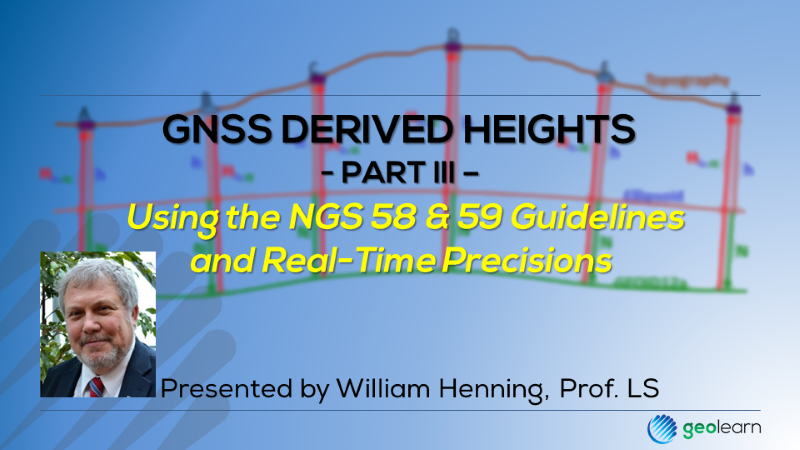Course Description:
Geospatial practitioners have several methods to produce precise and accurate data from GNSS. However, there are many facets of GNSS positioning that might lead them to selecting one method over another depending on their needs. This session will compare static GNSS methods with real time methods and the precisions available from each one. A real world static GPS project for a county-wide height modernization network will be presented as it followed the NGS 58 & 59 guidelines for GPS derived ellipsoid heights and GPS derived orthometric heights, respectively. A summary of real time guidelines will be shown along with a discussion on site localization that is recommended for vertical data from a real time GNSS network (RTN). (For a thorough discussion of real time methods and important considerations the practitioner is referred to the four part GeoLearn series on real time GNSS positioning). Finally, static data from the NGS OPUS-S and OPUS-RS programs will be evaluated with a tip on editing Rinex data to submit to both of the programs.
Learning Objectives:
- Heights from the NGS data sheet
- Considerations for choosing RT or static procedures for your site control work
- Using NGS 58 & 59 guidelines for HTMOD or large projects using a real world example for planning, field requirements, data processing, and adjustment
- The RTN alternative to static work
- Localization to site control
- The four cardinal rules for RT positioning and the NGS RT guidelines
- OPUS for horizontal and vertical positions



